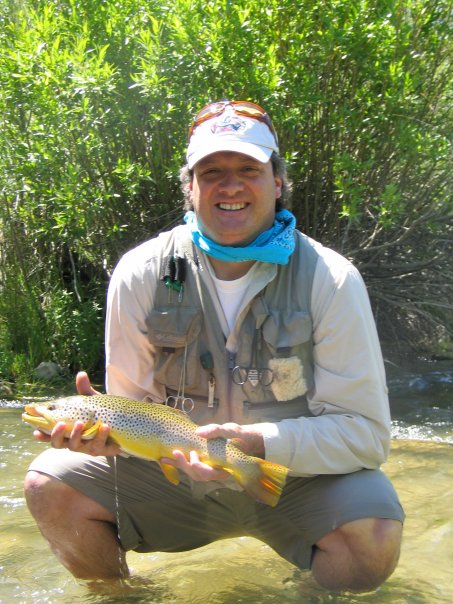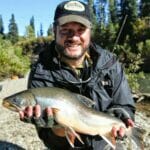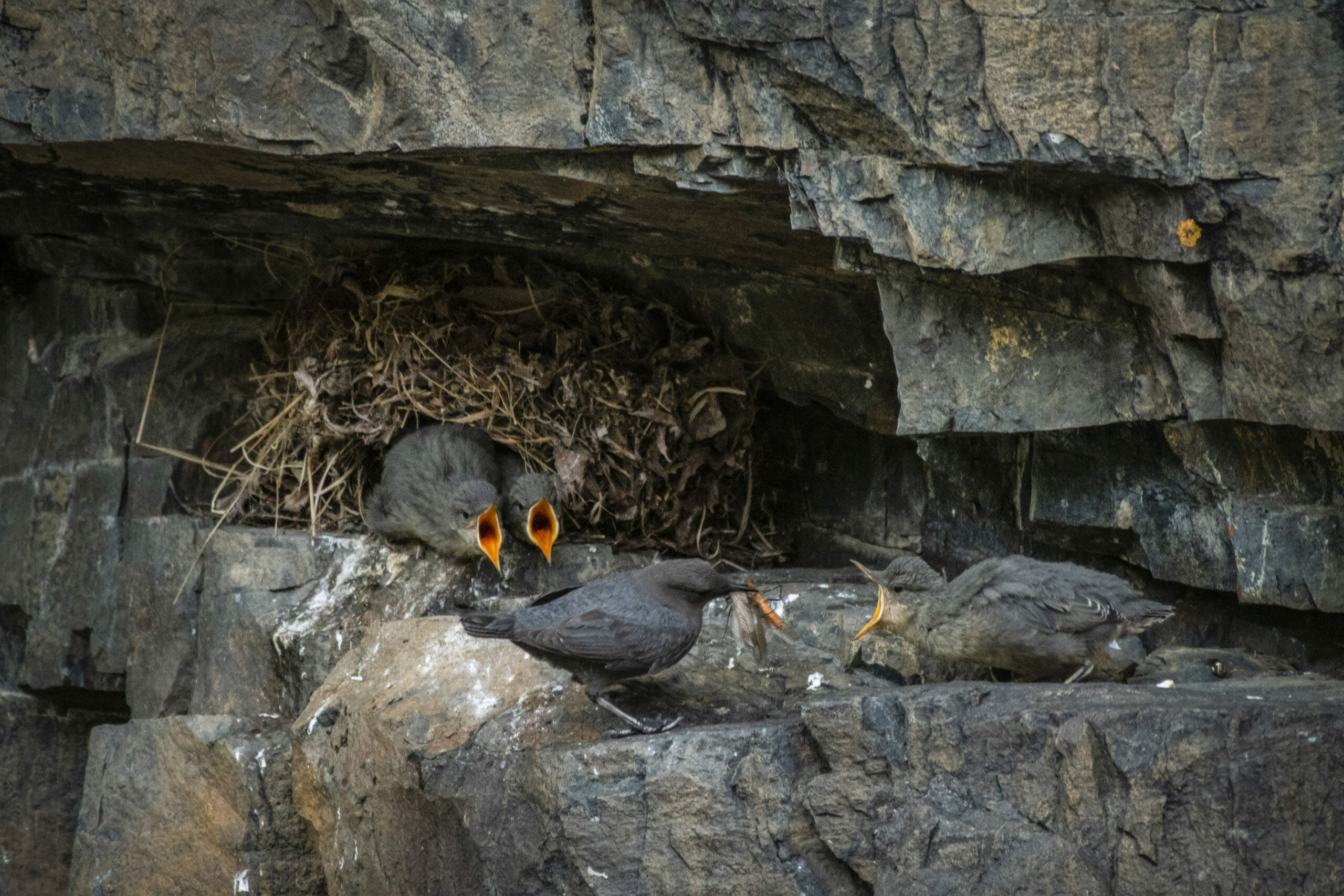The fishing had been ok that morning years ago when Corey Fisher and I waded up a small creek in Utah trying not to scare fish — or rattlesnakes. We had each caught a couple, but nothing like the fish we had heard about coming from this remote destination.
That, however, was about to change. We knew this because a little birdy told us. Actually, we noticed a lot of pretty big American robins performing all kinds of aerial stunts over the river. The realization they were feeding on something – something the trout in the water below may also find appetizing – hit us both at the same time.
“You have any drakes?,” Corey asked with a beaming grin full of hope on his face. “I left my drake box in the car.”
As it turned out I did have a box of cripple drakes. After seeing a couple of big mouths rise to the occasion under the birds – and a few minutes of extreme politeness about who should be the first to cast to the fish — I hooked into one of the fish we had been hearing about.

Corey and I are now colleagues at Trout Unlimited, we were not at the time, and we still talk about that moment of seeing the robins and how it changed our trip more than a decade ago.
Saltwater anglers know well to trust birds when looking for good fishing spots. Hoovering and diving birds almost always mean large schools of bait fish and where there are bait fish there are predators.
Too often freshwater anglers can be oblivious about things happening above and to the side of the water that, if utilized, can increase the likelihood of hooking up. I often watch for groups of swallows swarming an area over the river in the late evening knowing there are likely fish doing the same thing below.
So, birds provide anglers with more than feathers for flies and lures.
In addition to helping people find fish, our feathered friends also provide us company when on the water.
My family camped along a river not far from Salt Lake City during my youth. It was our go-to destination. We fished it almost every weekend and sometimes we snuck away during the week as well.
I fished by myself a lot on those trips; pretty content to wander a half mile or so of the river and just soak up the things going on around me. One of my favorite companions during those times was an American dipper, or maybe a family of them. Whenever a dipper got close, I’d stop fishing and hold still so I wouldn’t scare the bird. The bouncy dipper dance always fascinated me and often made me laugh out loud.
If I didn’t frighten the bird off, the dipper would stay within my sight probing along the river for 4 or maybe 5 minutes if I was really lucky. They seemed to be on a two-hour cycle – meaning I’d see one about every two hours if I stayed in the same area for the day.
Seeing the cool short video called “A Trout with Feathers” by Mariah Lundgren of The Platte Basin Timelapse really brought me back to those days. For more information about American dippers and The Platte Basin Timelapse project read photographer Michael Forsberg’s great piece from their website.
My ability to travel increased and I eventually found myself on a much larger river. The Green River in northeastern Utah quickly became the home river of my adulthood. It was in the deep red canyons of the upper section of the Green River below Flaming Gorge Dam where I found a new bird to keep me company. The canyon wren rarely gives me the viewing opportunity like the dipper did on the stream of my youth, but it makes up for it with its song.
If I’m longing for time on the Green, I just need to close my eyes and play the song of the canyon wren. Suddenly I’m back on the Green casting to rising fish with a light, fresh breeze blowing on my face and all because of the canyon wren’s desire to sing to the world, well, at least to other canyon wrens.
Brett Prettyman is the Intermountain Communications Director for Trout Unlimited. He lives in Salt Lake City.



